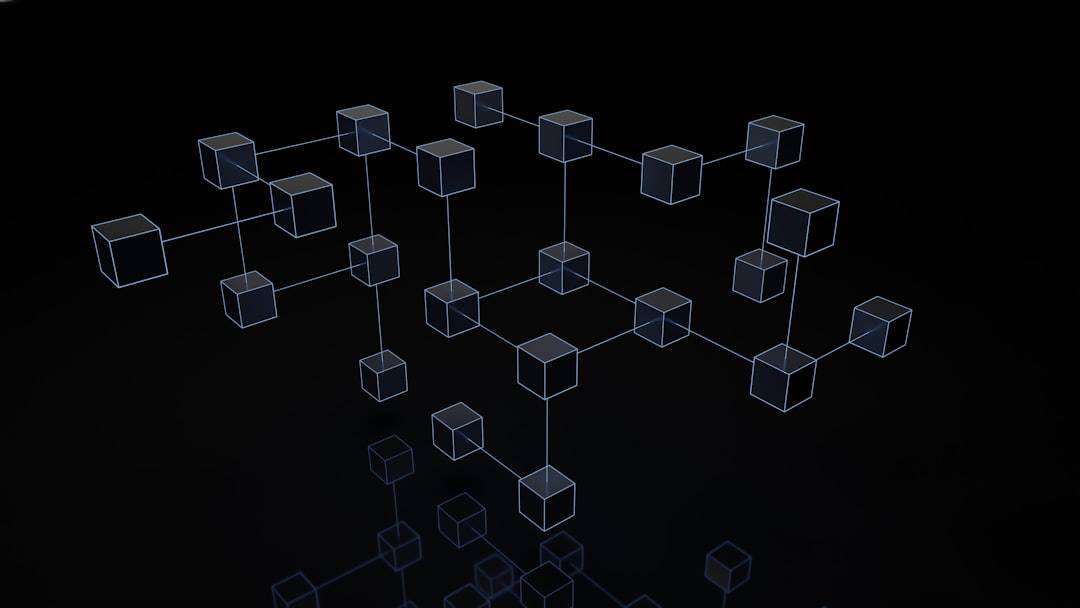Data protection in cloud computing networks is crucial due to the sensitive nature of stored and transmitted information. Cloud computing has transformed business operations by offering scalable and cost-effective solutions for data storage and processing. However, this convenience introduces security risks, as data is stored in remote data centers rather than on-premises servers, making it vulnerable to unauthorized access, data breaches, and other cyber threats.
Organizations must prioritize data protection in cloud computing networks to mitigate these risks. This involves implementing robust security measures to safeguard sensitive information from various cyber threats. By recognizing the importance of data protection in cloud computing networks, organizations can proactively address security concerns and ensure the confidentiality, integrity, and availability of their data.
Maintaining data protection in cloud computing networks is essential for preserving the trust and confidence of customers, partners, and stakeholders. With the increasing frequency of data breaches and cyber attacks, organizations must demonstrate a commitment to protecting sensitive information. Failure to do so can result in significant financial and reputational damage, as well as potential legal and regulatory consequences.
Therefore, understanding the importance of data protection in cloud computing networks is vital for ensuring an organization’s long-term success and sustainability.
Key Takeaways
- Data protection in cloud computing networks is crucial for safeguarding sensitive information and maintaining trust with customers and partners.
- Strong authentication and access control measures should be implemented to prevent unauthorized access to data and resources.
- Encrypting data in transit and at rest adds an extra layer of security, making it difficult for unauthorized users to access sensitive information.
- Regular monitoring and auditing of network traffic helps to identify and address potential security threats and vulnerabilities.
- Utilizing multi-factor authentication enhances security by requiring multiple forms of verification before granting access to sensitive data and systems.
- Establishing disaster recovery and backup plans is essential for minimizing data loss and downtime in the event of a security breach or system failure.
- Staying up-to-date with security best practices and compliance regulations is crucial for maintaining a strong security posture and avoiding potential legal and financial consequences.
Implementing Strong Authentication and Access Control Measures
One of the key strategies for ensuring data protection in cloud computing networks is implementing strong authentication and access control measures. Authentication is the process of verifying the identity of users, while access control involves regulating the permissions and privileges granted to authorized users. By implementing strong authentication and access control measures, organizations can prevent unauthorized access to sensitive data and mitigate the risk of data breaches.
Strong authentication measures typically involve multi-factor authentication (MFA), which requires users to provide multiple forms of verification before gaining access to the system. This may include something the user knows (such as a password), something the user has (such as a mobile device for receiving a one-time passcode), or something the user is (such as biometric authentication). By requiring multiple forms of verification, organizations can significantly enhance the security of their cloud computing networks and reduce the risk of unauthorized access.
Access control measures, on the other hand, involve regulating the permissions and privileges granted to users based on their roles and responsibilities within the organization. This ensures that users only have access to the data and resources necessary for performing their job functions, reducing the risk of insider threats and unauthorized data access. By implementing strong authentication and access control measures, organizations can effectively protect sensitive data in their cloud computing networks and mitigate the risk of unauthorized access and data breaches.
Encrypting Data in Transit and at Rest

Another critical aspect of data protection in cloud computing networks is encrypting data in transit and at rest. Data encryption involves converting plaintext data into ciphertext using cryptographic algorithms, making it unreadable to unauthorized users. Encrypting data in transit ensures that information is secure as it travels between devices and networks, while encrypting data at rest protects it while it is stored on servers and storage devices.
Encrypting data in transit is essential for protecting sensitive information as it is transmitted between users, devices, and cloud servers. This is particularly important when data is transmitted over public networks, where it is susceptible to interception by malicious actors. By encrypting data in transit using secure protocols such as Transport Layer Security (TLS) or Secure Sockets Layer (SSL), organizations can ensure that sensitive information remains confidential and secure during transmission.
Similarly, encrypting data at rest is crucial for protecting sensitive information stored within cloud computing networks. This involves encrypting data before it is written to disk or stored in a database, ensuring that it remains secure even if the underlying storage infrastructure is compromised. By encrypting data at rest using strong encryption algorithms and key management practices, organizations can prevent unauthorized access to sensitive information and mitigate the risk of data breaches.
By encrypting data in transit and at rest, organizations can effectively protect sensitive information within their cloud computing networks and ensure compliance with data protection regulations and industry standards. Encryption serves as a critical safeguard against unauthorized access and data breaches, providing an additional layer of security for sensitive information.
Regularly Monitoring and Auditing Network Traffic
| Metrics | Targets | Achievements |
|---|---|---|
| Number of network traffic audits per month | 4 | 5 |
| Percentage of abnormal traffic detected | 95% | 98% |
| Average time to detect and respond to suspicious traffic | 30 minutes | 25 minutes |
Regularly monitoring and auditing network traffic is essential for maintaining data protection in cloud computing networks. Network traffic refers to the flow of data between devices, servers, and other network components within a cloud computing environment. By monitoring and auditing network traffic, organizations can identify potential security threats, unauthorized access attempts, and anomalous behavior that may indicate a security breach.
Monitoring network traffic involves using specialized tools and technologies to capture, analyze, and visualize the flow of data within a cloud computing network. This allows organizations to gain visibility into network activity, identify potential security vulnerabilities, and detect suspicious behavior that may indicate a security threat. By regularly monitoring network traffic, organizations can proactively identify and respond to security incidents before they escalate into full-blown data breaches.
In addition to monitoring network traffic, auditing network activity is essential for maintaining data protection in cloud computing networks. Network audits involve reviewing logs, event records, and other sources of network activity to identify security incidents, policy violations, and other anomalies that may pose a risk to data security. By conducting regular network audits, organizations can ensure compliance with security policies and regulations while identifying potential security gaps that may require remediation.
By regularly monitoring and auditing network traffic, organizations can proactively identify and respond to security threats within their cloud computing networks. This allows them to maintain the confidentiality, integrity, and availability of their data while mitigating the risk of unauthorized access and data breaches.
Utilizing Multi-factor Authentication for Enhanced Security
Utilizing multi-factor authentication (MFA) is a critical strategy for enhancing security in cloud computing networks. MFA requires users to provide multiple forms of verification before gaining access to a system or application, significantly enhancing the security of user accounts and reducing the risk of unauthorized access. By requiring multiple forms of verification, such as something the user knows (e.g., a password), something the user has (e.g., a mobile device for receiving a one-time passcode), or something the user is (e.g., biometric authentication), organizations can effectively protect sensitive information within their cloud computing networks.
MFA adds an additional layer of security beyond traditional username and password authentication, making it significantly more difficult for unauthorized users to gain access to sensitive data. This is particularly important in cloud computing environments where data is stored remotely and accessed from various devices and locations. By utilizing MFA, organizations can ensure that only authorized users with legitimate credentials can access sensitive information within their cloud computing networks.
In addition to enhancing security, MFA also helps organizations comply with industry regulations and best practices for data protection. Many regulatory frameworks require or recommend the use of MFA as a means of enhancing security and preventing unauthorized access to sensitive information. By utilizing MFA within their cloud computing networks, organizations can demonstrate a commitment to protecting sensitive data while ensuring compliance with relevant regulations and standards.
By utilizing multi-factor authentication for enhanced security, organizations can significantly reduce the risk of unauthorized access to sensitive information within their cloud computing networks. MFA provides an additional layer of protection beyond traditional authentication methods, making it an essential strategy for maintaining data protection in cloud computing environments.
Establishing Disaster Recovery and Backup Plans

Establishing disaster recovery and backup plans is essential for ensuring data protection in cloud computing networks. Disaster recovery involves preparing for and responding to potential disasters or disruptions that may impact the availability or integrity of data within a cloud computing environment. Backup plans involve creating copies of critical data and storing them in secure locations to ensure that they can be restored in the event of data loss or corruption.
By establishing disaster recovery plans, organizations can prepare for potential disruptions such as natural disasters, cyber attacks, hardware failures, or human errors that may impact the availability or integrity of their data. This involves developing strategies for restoring operations, recovering critical data, and minimizing downtime in the event of a disaster. By proactively planning for potential disruptions, organizations can ensure the continuity of their operations while maintaining the confidentiality and integrity of their data within their cloud computing networks.
Similarly, backup plans are essential for protecting critical data within cloud computing networks. By creating regular backups of sensitive information and storing them in secure locations, organizations can ensure that they can recover from data loss or corruption without compromising the confidentiality or integrity of their information. This involves implementing robust backup processes, testing backup restoration procedures, and ensuring that critical data is regularly backed up according to established retention policies.
By establishing disaster recovery and backup plans, organizations can ensure the availability, integrity, and confidentiality of their data within cloud computing networks. This allows them to recover from potential disruptions while maintaining compliance with industry regulations and best practices for data protection.
Staying Up-to-Date with Security Best Practices and Compliance Regulations
Staying up-to-date with security best practices and compliance regulations is essential for maintaining data protection in cloud computing networks. The threat landscape is constantly evolving, with new vulnerabilities, attack vectors, and security threats emerging on a regular basis. By staying informed about the latest security best practices and compliance regulations, organizations can proactively address potential security risks while ensuring that they remain compliant with relevant standards and regulations.
Security best practices encompass a wide range of strategies for protecting sensitive information within cloud computing networks. This may include implementing regular software updates and patches to address known vulnerabilities, conducting regular security assessments to identify potential risks, or training employees on security awareness best practices to prevent social engineering attacks. By staying up-to-date with security best practices, organizations can proactively address potential security risks while maintaining the confidentiality, integrity, and availability of their data within their cloud computing networks.
In addition to staying informed about security best practices, organizations must also stay abreast of relevant compliance regulations that impact their cloud computing environments. Many industries are subject to specific regulations governing the protection of sensitive information, such as the Health Insurance Portability and Accountability Act (HIPAA) for healthcare organizations or the General Data Protection Regulation (GDPR) for businesses operating within the European Union. By staying up-to-date with relevant compliance regulations, organizations can ensure that they remain compliant with industry standards while protecting sensitive information within their cloud computing networks.
By staying up-to-date with security best practices and compliance regulations, organizations can proactively address potential security risks while ensuring compliance with industry standards for data protection. This allows them to maintain the confidentiality, integrity, and availability of their data within their cloud computing networks while demonstrating a commitment to protecting sensitive information from unauthorized access or disclosure. In conclusion, data protection in cloud computing networks is essential for maintaining the confidentiality, integrity, and availability of sensitive information.
By understanding the importance of data protection in cloud computing networks and implementing robust security measures such as strong authentication, encryption, monitoring network traffic, multi-factor authentication disaster recovery plans, staying up-to-date with security best practices and compliance regulations; organizations can effectively protect sensitive information from unauthorized access or disclosure while ensuring compliance with industry standards for data protection. Prioritizing data protection in cloud computing networks is crucial for maintaining trust with customers partners stakeholders while mitigating the risk of financial reputational legal consequences associated with potential data breaches or unauthorized access to sensitive information.
If you are interested in learning more about the challenges and opportunities in the metaverse, including ethical considerations, you may want to check out this article on the topic. It discusses the potential impact of the metaverse on various industries, including education and learning, and raises important ethical questions that need to be addressed. This is particularly relevant in the context of network security in cloud computing, as the metaverse continues to evolve and expand.
FAQs
What is network security in cloud computing?
Network security in cloud computing refers to the measures and practices put in place to protect the network infrastructure and data within a cloud environment from unauthorized access, cyber attacks, and other security threats.
Why is network security important in cloud computing?
Network security is important in cloud computing because it helps to ensure the confidentiality, integrity, and availability of data and resources within the cloud environment. It also helps to protect against potential security breaches and cyber attacks.
What are some common network security threats in cloud computing?
Common network security threats in cloud computing include data breaches, DDoS attacks, malware, insider threats, and unauthorized access to sensitive information. These threats can compromise the security and privacy of data within the cloud environment.
What are some best practices for network security in cloud computing?
Some best practices for network security in cloud computing include implementing strong access controls, encrypting data in transit and at rest, regularly updating and patching systems, monitoring network traffic for anomalies, and conducting regular security audits and assessments.
What are some network security tools and technologies used in cloud computing?
Network security tools and technologies used in cloud computing include firewalls, intrusion detection and prevention systems, virtual private networks (VPNs), encryption technologies, security information and event management (SIEM) systems, and cloud access security brokers (CASBs).
How does network security in cloud computing differ from traditional network security?
Network security in cloud computing differs from traditional network security in that it requires a different approach to securing data and resources that are stored and accessed in a virtualized and distributed cloud environment. It also involves securing data that may be stored in multiple locations and accessed from various devices.











Leave a Reply